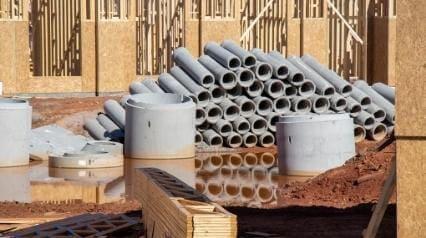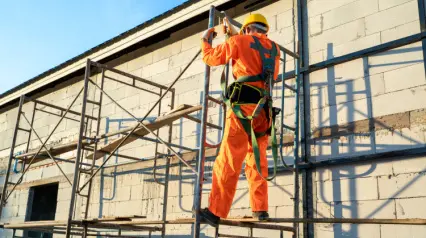What is a SWPPP?
SWPPP means and stands for Storm Water Pollution Prevention Plan. Required by the Environmental Protection Agency (EPA), a SWPPP is a document that regulates construction sites and outlines how the site will manage stormwater runoff.
The main goal of an SWPPP is to reduce the number of pollutants carried by stormwater runoff into local waterways and sewage treatment plants. This is essential because stormwater runoff is one of the leading sources of water pollution in the United States.
An SWPPP must be developed for any construction site that:
- disturbs at least one acre of land; or
- is part of a larger common plan of development or sale involving multiple contiguous (i.e., sharing a common border) sites with a total disturbed area of at least one acre.
How Does SWPPP Affect the Construction Industry?
SWPPP is an essential part of the construction process, as it helps to protect waterways by regulating the way in which construction professionals dispose of wastewater.
By ensuring that all wastewater is properly treated and disposed of, SWPPP helps to prevent pollution and safeguard public health. In addition, SWPPP can also help to reduce the cost of construction projects by reducing fines and improving the overall efficiency of the project.
Its Purpose
SWPPP has one sole purpose, and that is to protect water. The document outlines how a business or organization can protect water resources from pollution through the implementation of specific Best Management Practices (BMPs).
Who Needs and Uses an SWPPP?
Any facility that discharges pollutants into a Water of the United States (WOTUS) must have a National Pollutant Discharge Elimination System (NPDES) Permit. An SWPPP is a required step for obtaining this kind of permit.
Do I Need an SWPPP in My State?
Some states have specific requirements for SWPPPs, while others do not. To find out if you need an SWPPP in your state, contact your state’s Department of Environmental Quality or equivalent agency.
For example, the state of Texas requires all construction sites greater than 5 acres in size to have an SWPPP and a construction site, land development site, or any kind of facility that is regulated by the Texas Commission on Environmental Quality (TCEQ) may need an SWPPP as well.
What Does an SWPPP Include?
An SWPPP typically includes the following components:
1) Site map and description
This component includes a detailed map of the worksite and a description of each area on the map. It also provides information on any relevant features such as bodies of water, wetlands, and floodplains.
2) Pollution prevention procedures
These procedures outline how the worksite will prevent or minimize pollution from. They may include specific instructions on how to deal with spills, manage waste, and maintain drainage systems.
3) Sampling and analysis plan
This component outlines how samples will be taken and analyzed to determine whether or not the worksite is complying with environmental regulations.
4) Recordkeeping procedures
These procedures specify how records of all activities related to the SWPPP will be kept. They may include records of SWPPP inspections, sampling results, and pollution prevention procedures. To ensure proper documentation, you can use a digital SWPPP inspection form or checklist that is readily available and customizable according to your needs, or create one on your own.
Create your own SWPPP Inspection Checklist
Build from scratch or choose from our collection of free, ready-to-download, and customizable templates.
SWPPP Inspection ChecklistsHow to Develop SWPPP
According to US EPA, below are the following steps to develop SWPPP:
1) Site Assessment and Planning
Describe the site planning process, including how the site was selected, the purpose of the SWPPP, and the steps taken to minimize potential impacts.
2) Selecting Erosion and Sediment Control BMPs
Selecting the most appropriate erosion and sediment control measures for a project is critical to preventing or minimizing pollution. BMPs that are effective on one site may not be appropriate for another site.
3) Selecting Good Housekeeping BMPs
Incorporating good housekeeping practices into a project can reduce the amount of sediment leaving a site.
Integrate ESG principles into your operations
Drive sustainable growth and create long-term value with our ESG solutions.
Explore now4) Inspections, Maintenance, and Recordkeeping
Ensure that all workers involved in the project understand the erosion and sediment control plan and are properly trained on how to use the BMPs. Constant SWPPP inspection and maintenance are needed to keep sediment from leaving the job site.



